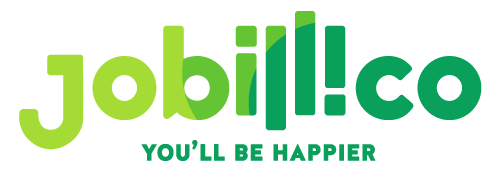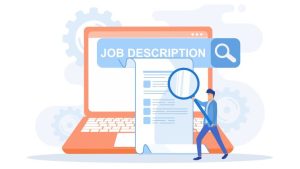Hiring and Retaining Gen Z: 8 Strategies for 2025
 Publié le 3 April 2025
Publié le 3 April 2025
The workforce is shifting significantly with a major generational change. Gen Z, born between the late 1990s and early 2010s, is the largest generation in the world and is expected to constitute one-quarter of the global workforce by 2025.
This is not just a question of who is being hired—but of how we are hiring. Gen Z comes with new priorities that are making many of the traditional approaches feel lame.
I hired for a junior position, and that’s when I realized that Gen Z candidates didn’t care about credentials as much as they did about other things, such as:
- What are you doing for sustainability?
- How do you support mental health and work-life balance?
- What growth and mentorship opportunities do you offer?
Some of the priorities were purpose over pay, long-term growth over job security, and other benefits. It made me stop and ask myself: Are we creating a workplace for this generation?
If you are a head of HR, a recruiter, or a founder, you can’t afford to overlook Gen Z’s expectations.
In this article, we’ll break down key strategies—backed by research and real-world examples—to attract and retain Gen Z talent in 2025.
1. Make the Workplace a Social Hub and Hybrid Haven
Gen Z doesn’t see the workplace as an entity located in one particular place, but as a community. A recent global survey established that 78% of Gen Z believe that the office is a place to create social ties and feel wanted.
Gen Z was born in the digital era, but they still want to work in person—on their terms. They like the hybrid model: remote work for when they need to concentrate, and coming to the office for meetings, brainstorming sessions, and socializing. Flexibility and work-life balance are now more valuable to this group than salary.
Which means that companies have to learn how to define productivity. It’s not a function of time spent at a workplace—it’s based on results.
“When Gen Z started entering the workforce, it was clear we couldn’t keep to an outdated office culture. We had to rethink how we work if we wanted people to stay.
First, we didn’t link productivity with hours. The office is for collaboration—not just a place to clock in. People come in for meetings and team-building, and work remotely when it makes sense.
Second, we focused on building real community: informal meetups, cross-team conversations, and a culture of belonging. It’s not about perks—it’s about connection.
These shifts helped us attract and retain top Gen Z talent. When people feel trusted and part of something, they don’t just stay—they thrive.”
— Victor Karpenko, CEO of SeoProfy
This sense of belonging is not only good for morale; it has a direct impact on the bottom line. According to Gallup, engaged teams lead to 21% higher profitability and are more creative and innovative.
Actionable tip: Ask Gen Z employees what would make the office feel like a community to them, and then try to incorporate it in some way—whether through the design of common areas, team events, or interest groups.
Only 22% of employees worldwide are highly engaged at work, and 16% are actively disengaged. Improving employee engagement can result in significant business benefits, such as increased productivity, customer satisfaction, and profitability.
While older generations may value different things—like job security or good benefits—Gen Z is more likely to prioritize work that aligns with their values, supports their well-being, and offers learning opportunities.
If companies want to keep Gen Z engaged, the answer lies in creating purpose-driven workplaces that prioritize well-being and community—something traditional models often miss.
2. Build a Purpose-Driven Brand
Gen Z has been called the generation of authenticity. We’ve grown up in a world of content and curated messages, and we’ve developed a strong beacon for the fake and transactional. To engage and keep this generation, companies simply can’t market culture—they have to live it.
A strong purpose-driven brand isn’t just about how you look on the outside, but how your employees feel on the inside. In Deloitte’s 2024 survey, 86% of Gen Z respondents said that a sense of purpose is key to job satisfaction, and nearly half have turned down jobs or tasks that didn’t match their values (hrzone.com). If your employer brand is just a glossy façade, Gen Z will see through it—and walk away.
Start by making your brand a living brand. Make your values, people, and purpose real and relatable—especially on platforms that Gen Z uses. No more polished corporate scripts. Instead, lean into:
- User-generated content like “day in the life” posts on Instagram or TikTok
- Behind-the-scenes looks at various projects—including failures
- Stories of growth, impact, and purpose, told by employees
Even a simple vlog or a Q&A session with a leader talking about the company’s ethics and real-world challenges can be credible. Deloitte pointed out that 50% of Gen Z have refused work tasks that go against their ethics, and 44% have refused to work for employers who didn’t share their values. For Gen Z, purpose isn’t a slogan—it’s a standard.
However, a values-based brand isn’t just about external communication—it must be reflected in the employee experience. That begins with personalization.
Gen Z wants to be recognized as a person, not a number. They want flexibility, relevance, and opportunities to grow. The Top Employers Institute found that 62% of Gen Z would accept a lower salary in exchange for better work-life balance, while MetLife discovered that 63% wanted benefits that are more personalized to them.
That means it’s time to rethink perks and development paths. Offer a variety of flexible and customizable benefits—mental health days, student loan repayment, pet insurance, or “benefits wallets” where employees can redeem credits for what they actually need.
When it comes to growth, Gen Z is not going to wait several years for a promotion. They want to acquire skills quickly, take on challenging tasks, and have access to real mentors. Move away from fixed career ladders and adopt more flexible structures that allow for movement across functions, roles, and learning paths. Growth should be frequent, informal, and two-way—driven by networks, not just one manager.
Finally, creating a purposeful brand means showing Gen Z: We’re not just selling purpose. We’re living it with you.
Actionable Tips
- Enable your employees—especially Gen Z—to post about their work experiences on LinkedIn or Instagram
- Post your position on key matters (e.g., DE&I, sustainability, mental health) with data, not just words
- Reassess your benefits: find out what matters most and make changes accordingly
- Communicate benefits and opportunities in relation to life stage or personal interests
- Make sure every Gen Z employee has a personal development plan and access to real mentorship
- Provide frequent, specific feedback—not just once a year
In short, Gen Z is asking one question: Why should I choose—and stick with—your company?
If your brand is purposeful, clear, and genuine from the inside out, you won’t just recruit Gen Z talent—you’ll gain their trust and keep them for the long run.
3. Foster Innovation Labs and a Startup Mindset
Gen Z has grown up in an entrepreneurial society, and they bring that mindset to the workplace. They have no interest in just repeating the same processes that have been done before. If they’re not learning or adding value in some way, they’ll leave.
To attract and keep them, companies must provide opportunities for creativity and intrapreneurship. That’s where Innovation Labs come in—specific areas or activities that allow employees to design, test, and disrupt. To show Gen Z that their ideas are valued, you could invest in innovation labs, hackathons, or ‘20% time’ initiatives. These provide them with the freedom to find solutions, create models, and enhance workflows without being watched over. It’s about autonomy and ownership—two things Gen Z needs.
“We realized that when Gen Z gets the power, they don’t just participate—they bring new ideas,” says Yevhenii Tymoshenko, CMO of Skylum. “A single junior team member suggested a new way to handle feature update launches. We allowed her to lead a two-week test with a small team, and the launch was 50% faster than usual.
That success led us to formalize a ‘10% time’ model: any employee can suggest a project if they can explain the problem, propose a solution, and define the metrics. We review proposals once a month and provide either the budget or mentorship to support them. Since then, cross-team participation is up by nearly a quarter, and we’ve brought to market ideas that leadership alone would not have come up with.
If you’re serious about recruiting Gen Z talent, then create a culture of experimentation. Start with a few hours a week, use a simple proposal template, and reward the effort—not just the results.”
And it benefits your business too. It boosts employee participation, breaks down departmental silos, and welcomes fresh thinking. The new blood Gen Z introduces may lead to game-changing ideas.
In conclusion, workplaces that encourage innovation are telling Gen Z: You are our future, and we want you to help shape it. Whether the ideas work or not, employees feel valued and empowered—and your company stays dynamic.
Actionable Tips
Set up internal accelerators or host innovation sessions on a regular basis
- Allow time or allocate funds for teams to generate and test ideas
- Celebrate and showcase standout outputs—and implement the best ones
- Pair Gen Z employees with seasoned professionals to help develop their ideas into tangible products
This way, you don’t just fulfill Gen Z’s desire for change—you also build a sustainable, future-ready business.
In other words, by cultivating a culture of experimentation, you not only meet Gen Z’s need to make a difference, but also create real value and momentum for your company.
4. Empower Gen Z with Ownership (ESOPs and Equity)
Gen Z doesn’t just want a job, they want to be part of something that is important to them. This generation has lived through an economically turbulent time and has been influenced by the startup revolution to have an entrepreneurial spirit. Some have a side hustle, a passion project, or have even created their own company. If your company can grasp that drive, then you won’t just attract ambitious talent, you will build a team of people who work like founders.
One of the best ways to harness this mindset: offer equity.
Whether it’s through ESOPs, stock options, profit sharing, or RSUs — when Gen Z gets a piece of the pie, it changes their mindset from employee to owner. As per McKinsey, 38% of Gen Z around the world wants to become a CEO — more than any other generation.
It’s not just a question of ambition: it’s a question of ownership, control, and impact.
You may not be able to give away corner offices, but offering even a modest equity stake is a clear message: “We trust you. We value you. We’re in this together.”
Equity is a big deal to Gen Z because:
- It increases commitment and reduces turnover. When Gen Z employees have real skin in the game, they are more likely to stay at the job and go the extra mile. Equity creates an emotional connection and looks to the future.
- It improves their financial position. A large number of Gen Z workers are fuzzy about relying on traditional retirement plans like pensions or 401(k)s. Equity looks more real and is more in line with their mindset — as, for instance, a stake in a tech startup, cryptocurrency, or real estate.
- It is consistent with the entrepreneurial orientation of the strategy. To someone facing a choice between your job offer and launching their own business, equity might be the straw that breaks the camel’s back. It enables them to grow with your company, not apart from it.
- It creates an ownership culture. People who think like owners are concerned with the end result. They seek to do what is best, to fix the problems, and to do more than what is required in the job. That is a good mindset, and it can be caught and used.
It integrates self-interest. Your team wins, they win. Equity links individual motivation to company results to increase engagement and accountability.
Make Equity Easily Understandable and Obtainable
Providing equity is a good beginning, but RSUs, vesting schedules, or other terms like that, which Gen Z may not understand completely, are best defined. It is unsafe to assume that all individuals are financially literate. Instead, back it up with training sessions, one-on-one guidance, and documentation with no jargon.
Equity should be a part of your long-term plan, not just a perk. Describe how value is being created (stock growth, funding rounds, vesting milestones) and how to keep employees engaged. When equity is made to feel real and valuable, it becomes one of your strongest retention tools.
Actionable Tips:
- Include everyone from all levels of ownership—new and junior hires included.
- Offer financial education sessions on the basics of equity.
- Calculate or depict using tools like calculators or infographics.
- Equity should be brought up regularly, and not just at onboarding.
5. Turn Commuting into a Purposeful Experience
To Gen Z, commuting isn’t a breeze—it has to be worth it. Young professionals who experienced remote learning and working during the pandemic often question the need to travel to the office when they can do the same work from home. The mindset is clear:
If the in-office experience isn’t meaningful, why bother?
Managers who want people to return to the office must pair that desire with a clear why. As reported by the World Economic Forum, Gen Z is flexible—but never willing to sacrifice their lifestyle or principles. A simple edict to return to the office, without enhancing the experience, will be resented.
Make the commute purposeful.
Think of the commute as part of your culture—not just part of the daily grind. Here are some practical ways to add value:
- Commuter perks: Offer monthly transit stipends, encourage ride shares, or cover parking costs.
- Sustainable options: Provide bike storage, showers, or incentives for walking or cycling.
- Learning on the go: Cover subscriptions to apps like Audible, Spotify, or Blinkist so commuting time becomes learning time.
- Flexibility: Let employees commute during off-peak hours. Establish core collaboration windows (e.g., 11 AM–3 PM) to sync up while easing the pressure of rush hour.
It’s also important to make in-office days actually worth the trip. Use them for what can’t happen effectively over Zoom:
- Brainstorming in teams
- Building relationships
- Training sessions
- Social activities
Some companies designate one day a week as “Team Day” and host breakfasts, mixers, or guest speakers—turning the office into a social and learning platform, not just another desk space.
If the office is where people connect, create, and recharge, Gen Z will want to be there—not because they’re told to, but because it benefits them.
Actionable Tips
- Survey employees: What would make office days more worth it?
- Offer transit or wellness incentives
- Shift the office experience to be more collaborative than solitary
- Try core hours with flexible start and end times
- Make commuting time count with learning perks or social experiences
6. Accelerate Career Growth with Rotation Programs and Global Exposure
Gen Z doesn’t want to wait 10 years to grow. They’ve seen careers disrupted, industries reinvented, and technologies leap forward—in real time. So they yearn for variety, speed, and purpose in their professional journey.
Static career ladders won’t retain them. To engage Gen Z, you need to design dynamic, fast-paced growth experiences.
Incorporate Rotation Programs
Instead of tying new hires to one position for several years, offer structured rotations every 3–6 months across departments. In their first year, a marketing associate could rotate through social media, analytics, and product. This allows them to explore a range of skills and discover what drives them—while you benefit from a more cross-trained and versatile team.
At DesignRush, we did this by providing junior team members with early cross-functional project exposure. For instance, one content writer participated in a UX audit with the product team a few months after joining the company. It wasn’t part of their job description, but they had shown interest, and it provided them with new skills, confidence, and visibility across other departments.
Long-term programs (12–24 months per role) feel too slow for this generation. Keep the cycles short to maintain energy and momentum in learning.
Think Global, Too
Gen Z is the first generation of true global digital natives. Many are ready for international exposure early in their careers. If your company has multiple offices or remote global teams, integrate cross-border collaboration into your strategy—or even introduce short-term exchanges or global rotation programs.
Even without travel, virtual international projects can expose Gen Z to different cultures and business practices. It makes their experience richer and expands their global perspective.
Build an Internal Talent Marketplace
Let Gen Z employees browse and apply for short-term, project-based gigs within the company. This gives them control over their growth and makes their day-to-day less monotonous.
For example:
- A software developer could join an AI task force for 20% of their time.
- An HR coordinator could contribute to a company-wide events team.
Think of it as freelancing within your company—it reveals hidden talents and opens up unconventional growth paths.
Don’t Delay Leadership
Gen Z wants to lead—and they don’t want to wait. Identify your high-potential employees early and offer “leadership-lite” opportunities like intern management, project leadership, or peer mentoring. Just make sure it’s backed with coaching and support.
According to the Top Employers Institute, a large percentage of Gen Z workers expect leadership growth early in their careers. They want to work under empathetic leaders, and they want to become those leaders in the near future.
“Peer mentoring is one of the best ways to provide Gen Zs with early leadership experience,” said Dominic Monn, the founder of MentorCruise.com. “It helps them gain self-esteem, develop various soft skills, and feel important without needing a formal position.
A simple way to start is by pairing newer employees with peers who are slightly ahead in their journey. Keep the structure lightweight—biweekly 30-minute check-ins work well. You could provide a basic guide for mentors that covers things like how to give constructive feedback, set goals, and know when to loop in a manager.
To check for effectiveness, get feedback from the team after the first month and again at 90 days. Ask both mentors and mentees about their experience, the growth they felt, and whether they would recommend continuing with the program. You’ll usually see improved participation, better teamwork, and greater responsibility taken by those in the mentoring position.”
7. Embrace Salary Transparency and Financial Wellness
Gen Z entered the workforce in an environment where the public is more aware of issues like pay inequality, financial insecurity, and student debt. Because of this, they’re more open to talking about money than previous generations—and they expect the same transparency from their employers.
Opaque pay policies erode trust. Gen Z wants to know how and when they’ll be paid, whether their salary is fair, and what it takes to progress. Some regions are already introducing regulations that require salary ranges on job descriptions. But even without legal pressure, removing the “pay-blind” culture can be a smart talent strategy.
“We used to do raises and promotions on a case-by-case basis, but it was confusing and untrustworthy. So, we built a transparent grading system. Every role is mapped to a level—from Associate to Director—that comes with defined salary bands, skill expectations, and impact metrics.
It outlines what’s required in terms of results, leadership, and business contribution per level. For instance, from Level 2 to Level 3 in marketing, you’re not just launching campaigns—you’re developing strategy, coaching peers, and meeting certain performance targets. They know what the criteria are ahead of time, and we look at them twice a year.
I thought it might bring more friction, but it actually took it away. People now know what growth looks like. It enhanced responsibility, decreased turnover, and increased the level of trust—especially with Gen Z, who require explanation and dynamics.”
— Jason Hennessey, the founder of Hennessey Digital
Some companies, including Buffer and Whole Foods, have gone as far as posting all employees’ salaries, creating a strong image of fairness. While not every organization can offer that level of openness, explaining the criteria for salaries, bonuses, and raises is a great way to build trust.
But here’s the other side of the coin: Gen Z also wants to be supported on their path to financial stability.
Many are managing student loans or dealing with the rising cost of living. As reported by MetLife and SHRM, Gen Z is more likely than earlier generations to expect employers to assist with financial wellnes. That includes programs like:
- Student loan assistance
- Financial coaching and planning workshops
- Matched savings programs or emergency funds
- Access to budgeting or investing apps
Even small benefits—like a $50/month student loan repayment or a free annual session with a financial advisor—can make a big difference.
Gen Z also craves stability. They’ve seen earlier generations face economic crashes and layoffs, and they want reassurance that their employer is financially sound. In fact, working for a “financially stable organization” is one of the top three priorities for Gen Z, right behind development and wellness.
Sharing high-level financial updates, growth plans, and providing clarity during downturns shows your commitment to their long-term security.
When you treat financial well-being as a core part of your employer value proposition, you show Gen Z that you care about their future—not just their present output.
Actionable Tips
- Audit pay for equity and fix any disparities
- Clearly explain how raises, bonuses, and promotions are handled
- Host open Q&As or “ask me anything” sessions with HR or leadership on compensation and business health
- Offer student loan support or partner with financial wellness platforms
- Communicate your organization’s financial stability—especially during recruitment conversations
8. Prioritize Well-Being with Mental Health Support and Coaching
Gen Z has a mental health problem, and they are not shy to talk about it. According to a McKinsey Health Institute survey of 15 countries across the world, 16% of Gen Z reported having poor mental health—twice as much as baby boomers. They are also more likely to experience loneliness and social isolation.
These challenges are also likely to follow them to the workplace. Organizations that act proactively to support well-being will not only enhance employee satisfaction but also enhance trust, decrease attrition, and be more attractive employers in the market.
But mental health support cannot be reduced to an EAP service. Leading companies provide:
- Free or subsidized therapy sessions
- Mental health apps (Headspace, Calm, BetterHelp)
- Mental Health First Aid training for managers
- Wellness budgets or stipends, or one of the two
Just as important: they model mental health discussions—talking about stress, burnout, and the need for a break. To them, well-being is not a perk but a right. Gen Z wants that. To them, well-being is not a luxury but a necessity.
Wellness also includes the physical and social aspect. Fitness reimbursements, yoga sessions, meditation rooms, or wellness days are nice—but they are not enough. Gen Z has a broad definition of health: it includes physical, emotional, social, and even financial health.
That means providing resources for social connection—hobby groups, volunteer days, employee communities. Provide support for real-life challenges as well—legal, caregiving, financial. Coaching and mentorship are important for mental health. Having someone to turn to for stress, growth, and belonging can decrease anxiety and increase retention rates. Make sure new hires have buddies or mentors. Get growth coaches, not just task managers.
Finally, focus on psychological safety. If Gen Z employees feel like they will be looked down upon for seeking help, they won’t. Leaders also have to demonstrate vulnerability—when the manager says that he is taking a mental health day, it means that rest is not stigmatized, but encouraged. Create ‘no meeting blocks’ or ‘mental health hours’ to allow employees some rest time without having to ask for it.
Actionable tips:
- Review your mental health coverage; see if there are any additions you can make, like stipends for therapy or access to apps
- Provide empathy and mental health awareness training for managers
- Check stress, burnout, and workload pulses—and act on them
- Incorporate no-meeting blocks or mental health hours
- Recognize and celebrate wellness behaviors—not just productivity
Well-being is not only about avoiding burnout, it is about fostering people’s potential to thrive. To Gen Z, this means working in a culture of rest, support, and personal development—not just in theory, but in practice.
The companies that are going to hire Gen Z are not just providing jobs, but providing a reason to work, flexibility, and growth. Try to pick one strategy and put it into practice this quarter. Your future workforce is watching.







